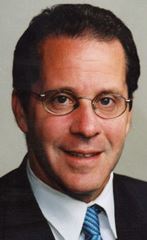
Hillary Clinton
The possibility of Hillary Clinton winning the Democratic nomination for the presidency is becoming more of a likelihood and GSE reform has become more and more of a hot button topic as of late.
A few months ago, Clinton laid out her plan to provide “a fair shot at homeownership” for everyone, but has not spoken on the possibility of GSE reform—nor have any of the presidential candidates. The closest they have come was earlier this week when presumptive Republican nominee Donald Trump said that in a couple of weeks he would overhaul the controversial Dodd-Frank Act if he is elected.
Clinton may have indirectly commented on a plan for GSE reform with the hiring of Gene Sperling, who was Director of the National Economic Council under Clinton’s husband and Obama and also served as Counselor to former Treasury Secretary Timothy Geithner, as her top economic adviser. Sperling and noted economists Jim Parrott, Lewis Ranieri, Mark Zandi, and Barry Zigas in March authored a white paper for Urban Institute titled “A More Promising Road to GSE Reform” in which they not only proposed to merge Fannie Mae and Freddie Mac into one government entity, but they highlighted the urgency of the situation, saying that the FHFA is helping Fannie Mae and Freddie Mac “tread water” and that “the situation is not healthy.” They insisted, “Let’s not wait until the next crisis” for GSE reform.

Gene Sperling
In that paper, the authors contend that a government corporation titled the National Mortgage Reinsurance Corporation (NMRC) would replace Fannie Mae and Freddie Mac and would perform the same functions as the GSEs do currently—it would purchase conforming single-family and multi-family mortgages and issue securities backing the loans through a single issuing platform operated by the NMRC—but unlike the GSEs, would be required to transfer all non-catastrophic debt risk on the securities it issues to a broad range of private entities.
Perhaps the most important difference between the NMRC and the current GSEs is that the NMRC “would be motivated neither by profit nor market share, but by a mandate to balance broad access to credit with the safety and soundness of the mortgage market.”
The plan offered by Sperling and his co-authors is similar to a plan offered earlier by Senators Tim Johnson (D-South Dakota) and Mike Crapo (R-Idaho) when the two were, respectively, Chairman and Ranking Member of the Senate Banking Committee. That plan included a government backstop for any catastrophic losses the mortgage industry might incur.
There is speculation that if Clinton is elected, she would likely tackle GSE reform at some point during her first 18 months in office. The hiring of Sperling as a top economic adviser would seem to indicate that she would share his views on housing policy reform.

 DSNews The homepage of the servicing industry
DSNews The homepage of the servicing industry










